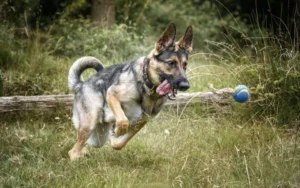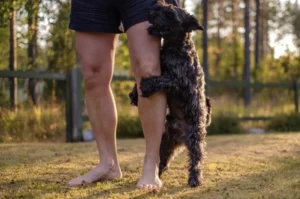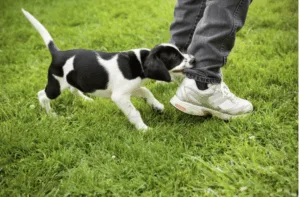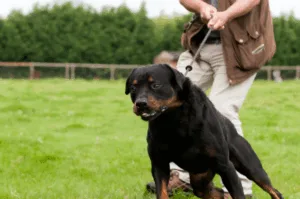Territorial aggression stands out as a particular complex trait deeply rooted in the primal instincts of our dogs. This protective behavior can often manifest in ways that challenge the harmony of our homes and the safety of both our families and visitors.
Discover the causes, recognize the signs, and master the most effective strategies for managing and preventing territorial aggression in dogs, including professional training solutions.
Importance of Addressing Territorial Aggression in Dogs
What is Territorial Aggression in Dogs?
Territorial aggression is a type of behavior displayed by dogs who believe they need to protect their space, be it in their home, yard, or even their owner, from perceived threats or intruders. This protective instinct can sometimes escalate into aggressive behavior, which, while natural, can become problematic.
Causes of Territorial Aggression in Dogs
Genetic predispositions
Some dog breeds have a natural inclination towards protectiveness, making them more prone to territorial behaviors. Understanding breed tendencies can help in managing and training.
Environmental factors
Dogs that experience a lack of secure boundaries within their environment may become overly protective of their space. Factors such as overcrowding or limited space can exacerbate territorial behavior, as dogs may feel the need to defend their resources or territory more fiercely.
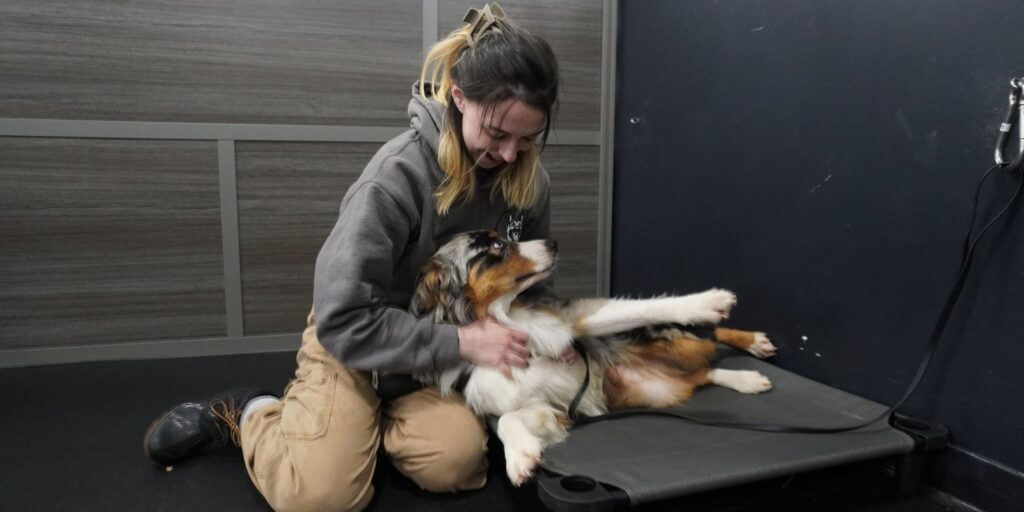
Lack of socialization
Dogs that are not properly socialized may display aggression towards unfamiliar people or animals. Without positive experiences and exposure to different situations, dogs may default to defensive behaviors, including territorial aggression, as a means of coping with perceived threats.
Past Negative Experiences
Traumatic events can trigger defensive behaviors in dogs, leading to territorial aggression. Understanding a dog’s history and providing a supportive and nurturing environment is essential in addressing and overcoming the effects of past trauma.
Lack of Training and Boundaries
Without clear guidance and training, dogs can misunderstand their role, leading to overprotectiveness. Clear guidance and consistent training are essential for establishing boundaries and teaching appropriate behavior to dogs.
Fear and Anxiety
Territorial aggression can also stem from a dog’s fear or anxiety, particularly in unfamiliar or threatening situations. Addressing underlying fear and anxiety through desensitization, counterconditioning, and behavior modification techniques can help alleviate territorial aggression and improve the overall well-being of the dog.
Signs of Territorial Aggression in Dogs
🗸 Barking at passersby
A common sign where dogs vocalize loudly at people or other animals passing by their home or designated area, indicating an attempt to ward off potential intruders.
🗸 Growling or snapping when someone approaches their territory
This behavior signifies a dog’s discomfort or perceived threat to their space, often escalating to snapping as a warning.
🗸 Body language such as raised hackles, stiff posture, or baring teeth
Raised hackles (the hair along the spine) and a stiff posture increase the dog’s size appearance, while baring teeth is a clear threat signal.
🗸 Attempting to chase or lunging at perceived threats
Actions that show the dog is not only signaling its discomfort but is also prepared to engage to protect its domain physically.
How to Manage Territorial Aggression in Dogs
Managing territorial aggression in dogs requires an approach that addresses the underlying causes of the behavior while implementing effective management strategies. Here are some key techniques for managing territorial aggression in dogs:
1. Create safe spaces for your dog:
Designate a specific area where your dog feels secure and can retreat to when feeling threatened.
2. Proper training and socialization
Enroll your dog in obedience classes and socialization activities to teach them appropriate behaviors around people and other animals. You can also introduce your dog to various environments, people, and other animals in a controlled and positive manner.
3. Establishing a consistent routine and boundaries within the home:
Consistency helps your dog understand what is expected of them and reduces uncertainty.
Innovative ways to manage and redirect aggression: Employing training strategies proves highly effective in guiding territorial behavior towards more desirable outcomes.
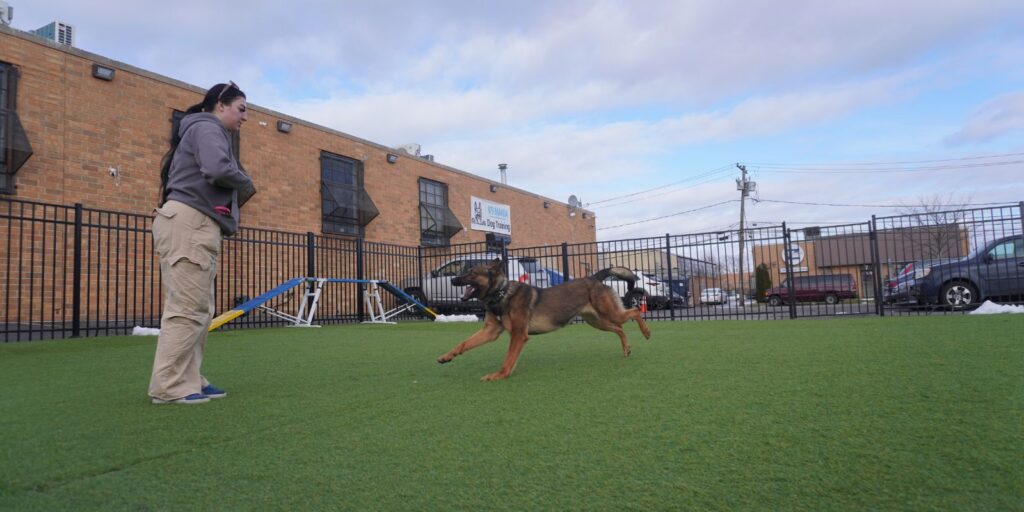
When to Seek Professional Help for Territorial Aggression in Dogs?
If your dog’s territorial aggression is escalating or if you feel overwhelmed, seeking professional help is crucial.
K9 Mania Dog Training dog behavior modification training specializes in addressing behavioral issues, including territorial aggression, with compassionate and effective training methods. Our experts have the knowledge and experience to assess your dog’s behavior, develop a customized training plan, and provide ongoing support to help you and your pet overcome aggressive tendencies. Visit our website or contact us to learn more about our services and how we can help you create a harmonious relationship with your canine companion.
Territorial Aggression in Dogs Prevention Strategies
1. Early socialization practices
Exposing your dog to a variety of situations from a young age can prevent fear-based aggression.
2. Creating a positive environment
Ensure your dog feels safe and loved in their home environment, reducing the need to guard aggressively.
3. Setting boundaries and limits
Teach your dog where their territory ends and how to react appropriately to visitors or strangers.
4. Consistent Training and Commands
Implementing a consistent training regimen that includes commands to cease aggressive behaviors ensures your dog knows how to respond calmly in potentially territorial situations.
5. Regular Exercise and Mental Stimulation
Keeping your dog physically active and mentally engaged can reduce boredom or anxiety that might contribute to territorial aggression, promoting overall behavioral health.
6. Professional Behavioral Consultation
Seeking advice from canine behavior specialists can provide tailored strategies to address and prevent territorial aggression, especially in cases where standard prevention techniques are insufficient.
Building a Harmonious Relationship with Your Dog
Addressing territorial aggression in dogs is not only about correcting unwanted behavior but also about understanding and meeting your dog’s needs. By implementing effective strategies and seeking professional assistance when necessary, you can help your dog become more confident and less reactive. Remember, every dog has the potential for positive change with the right approach and support.
Explore K9 Mania Dog Training’s comprehensive Board and Train Long Island program now to discover how we can assist in transforming your dog’s behavior for a harmonious living environment.


